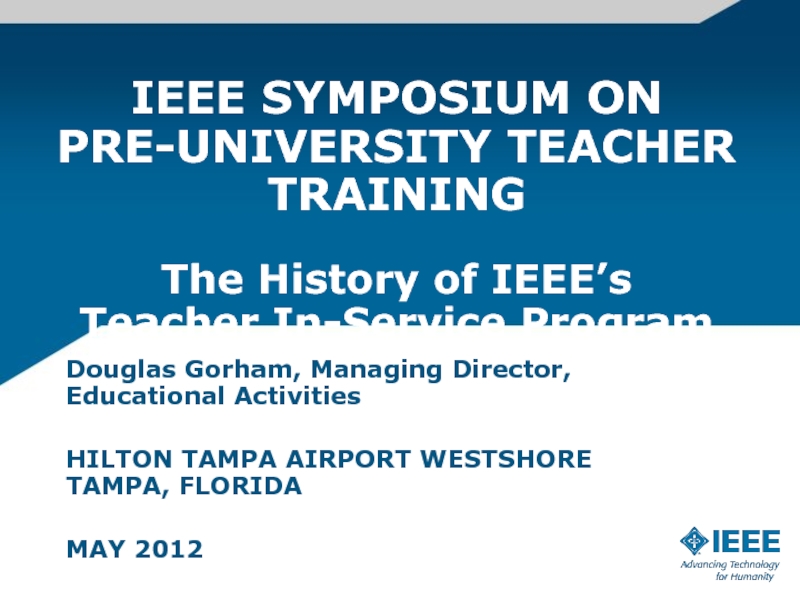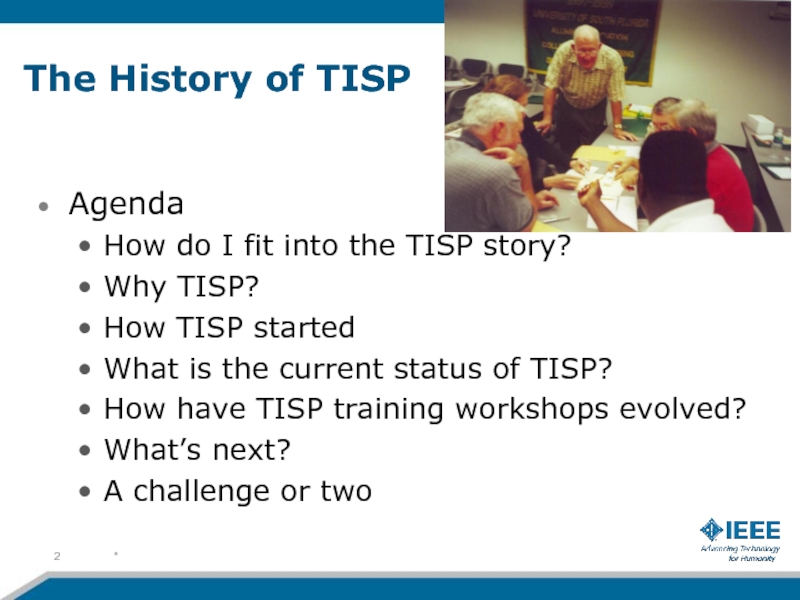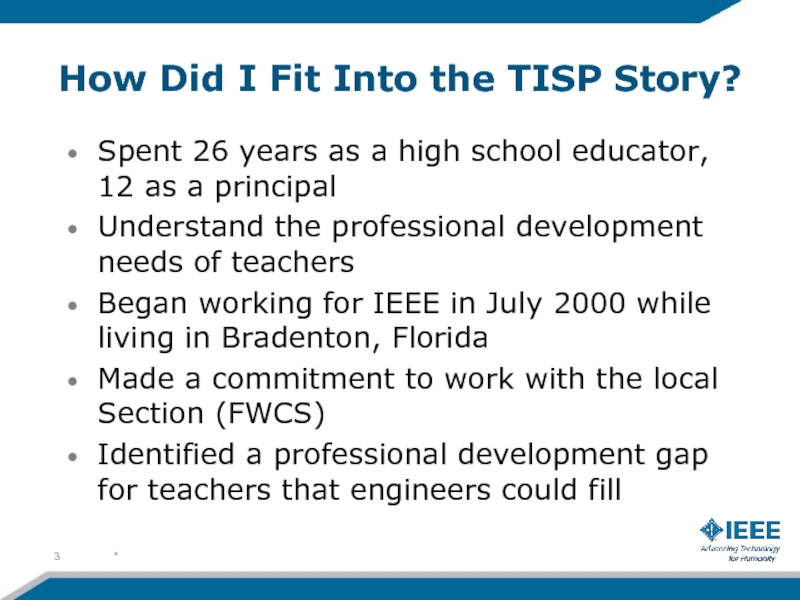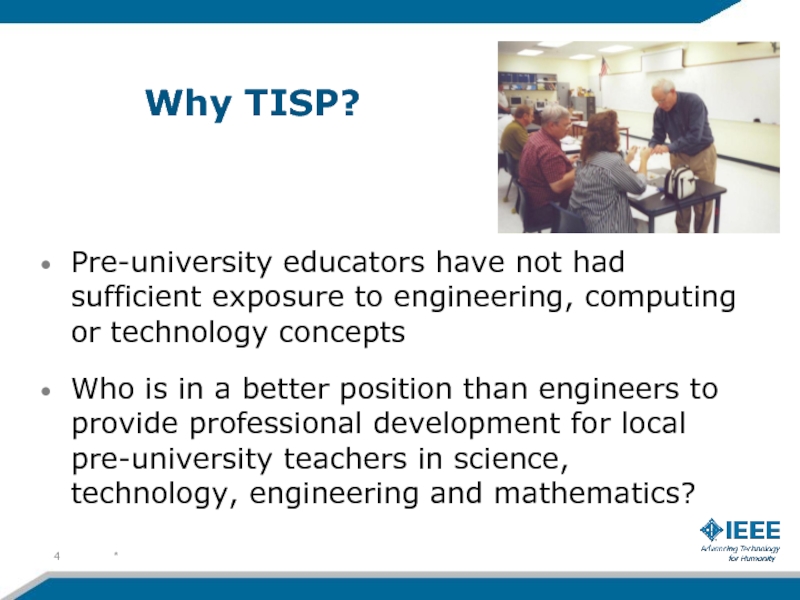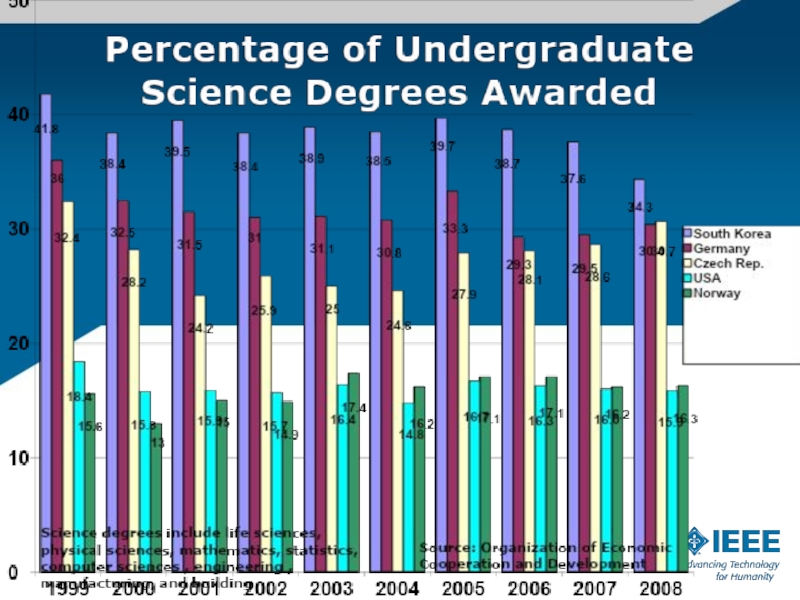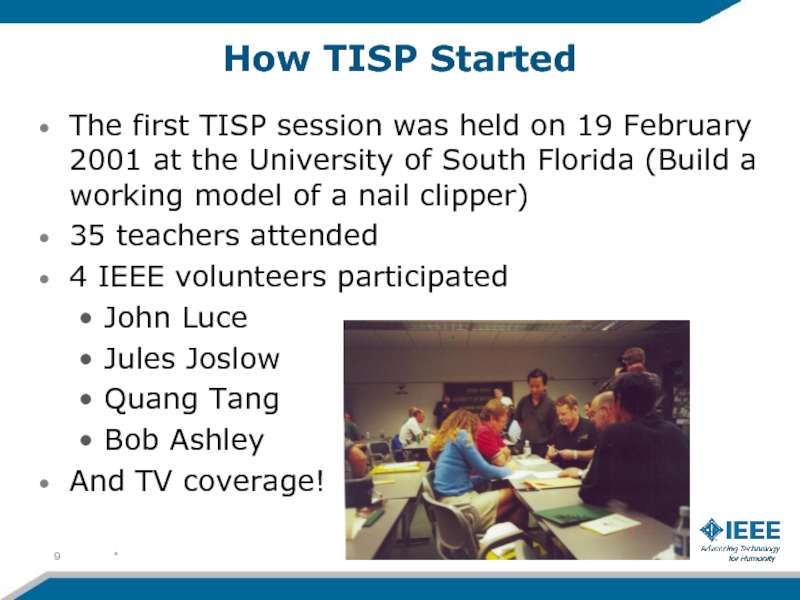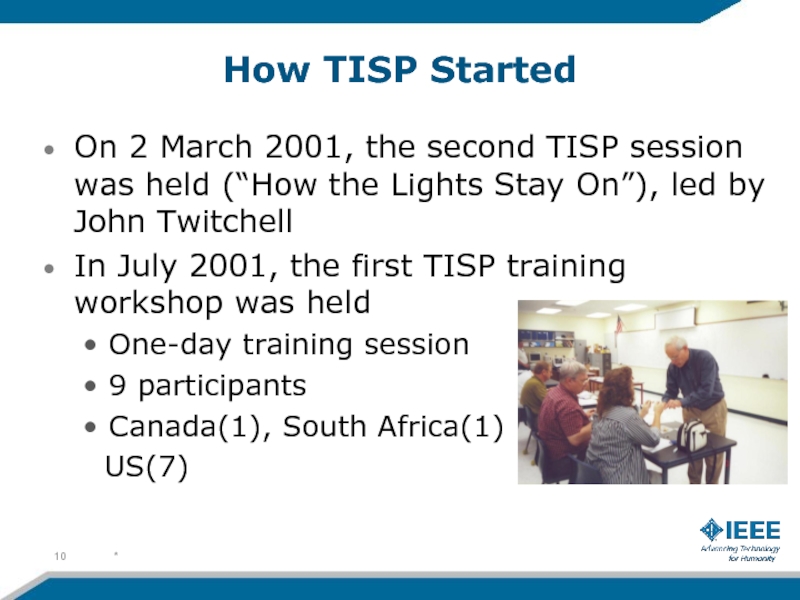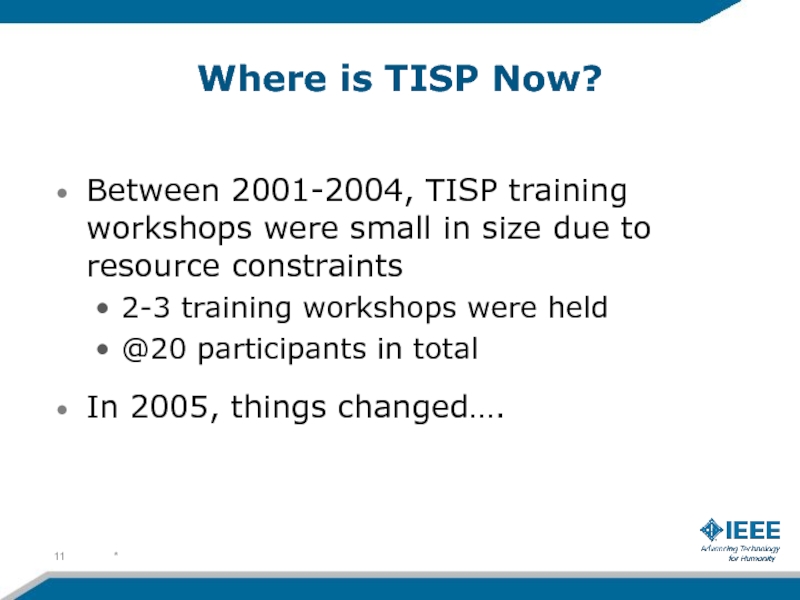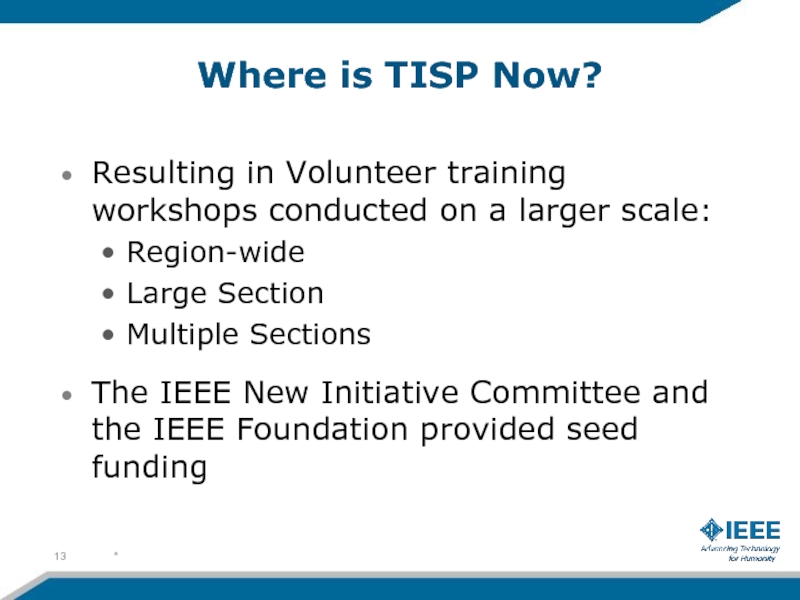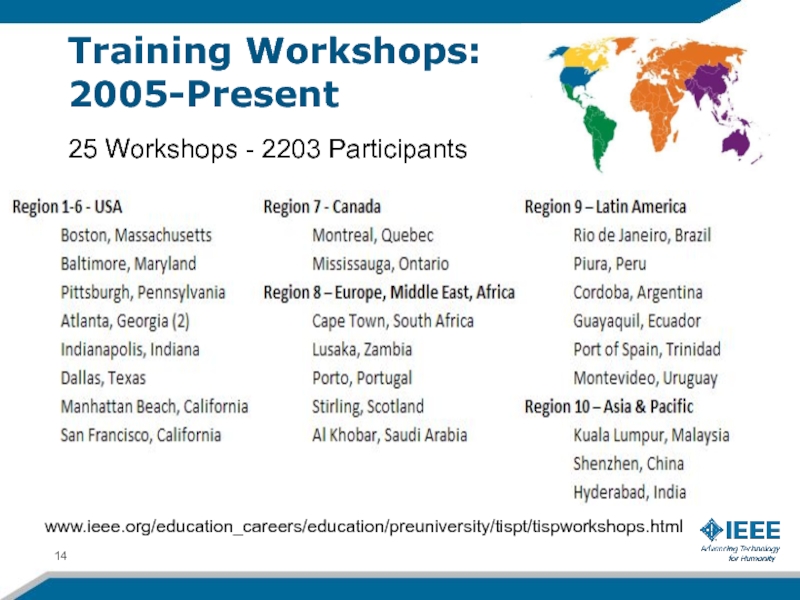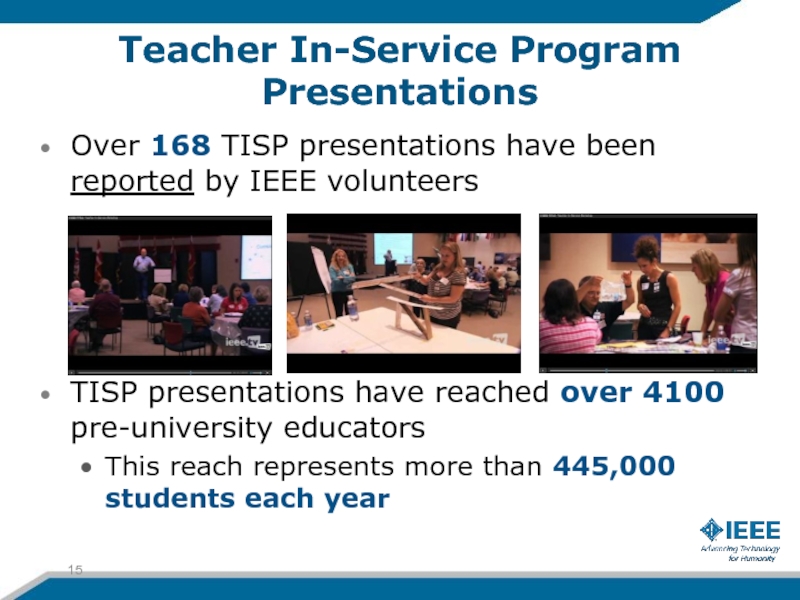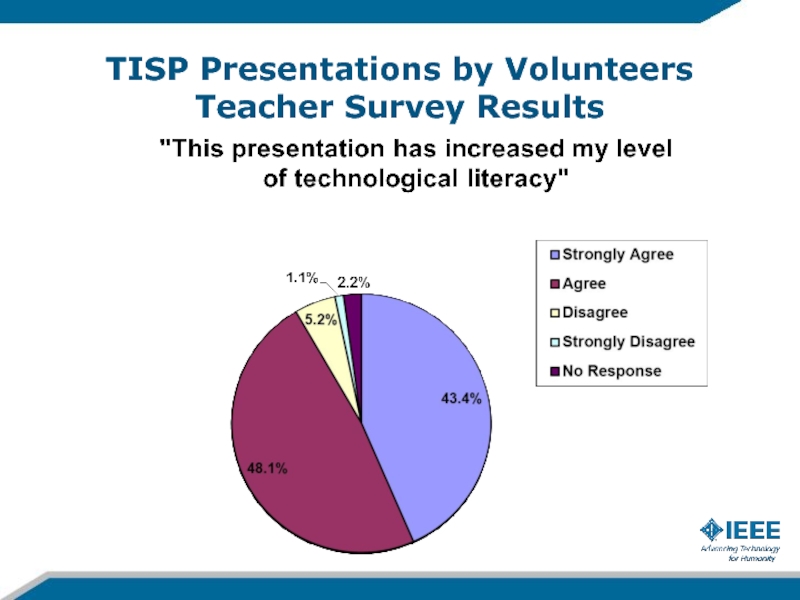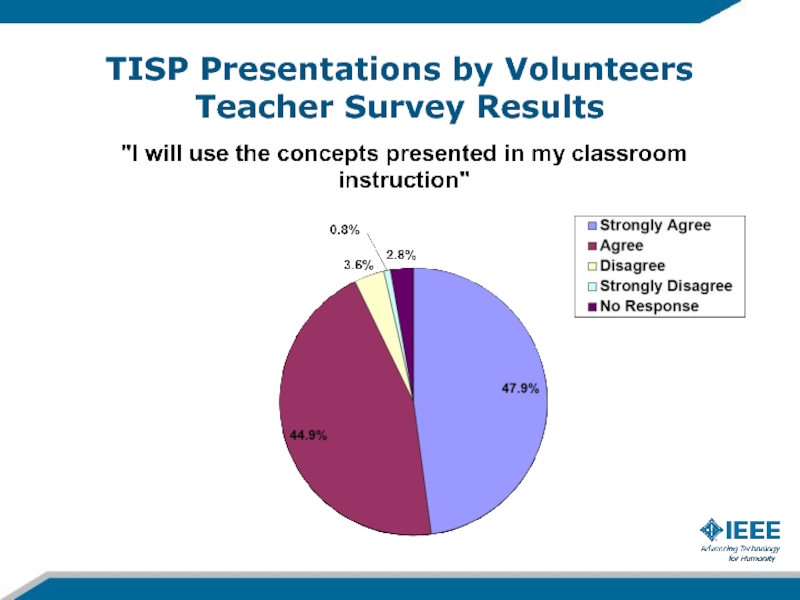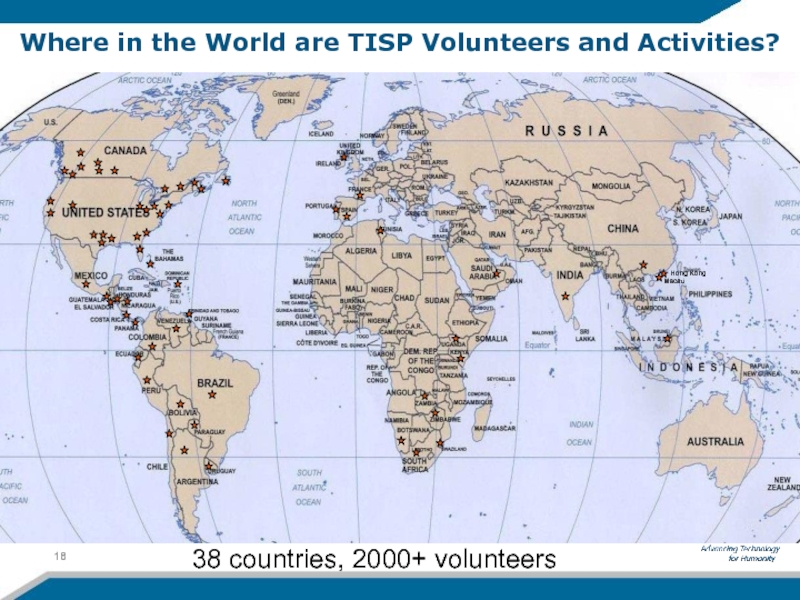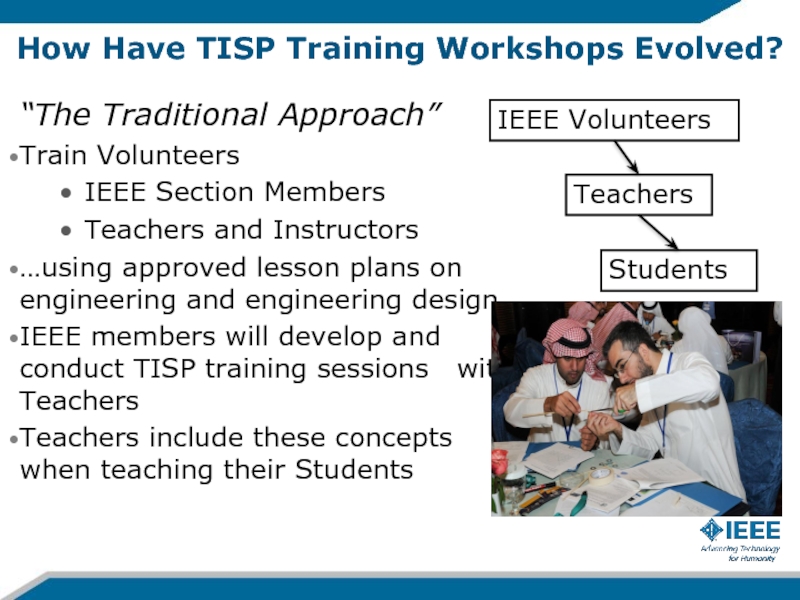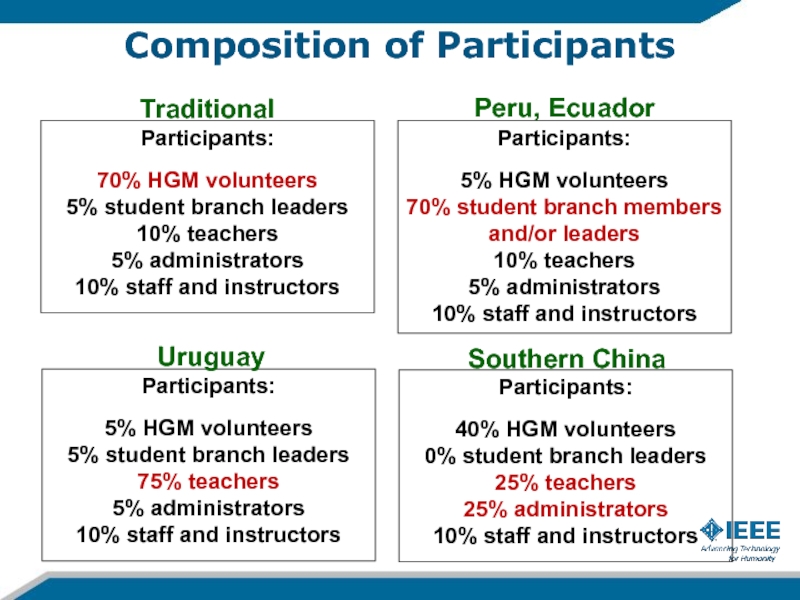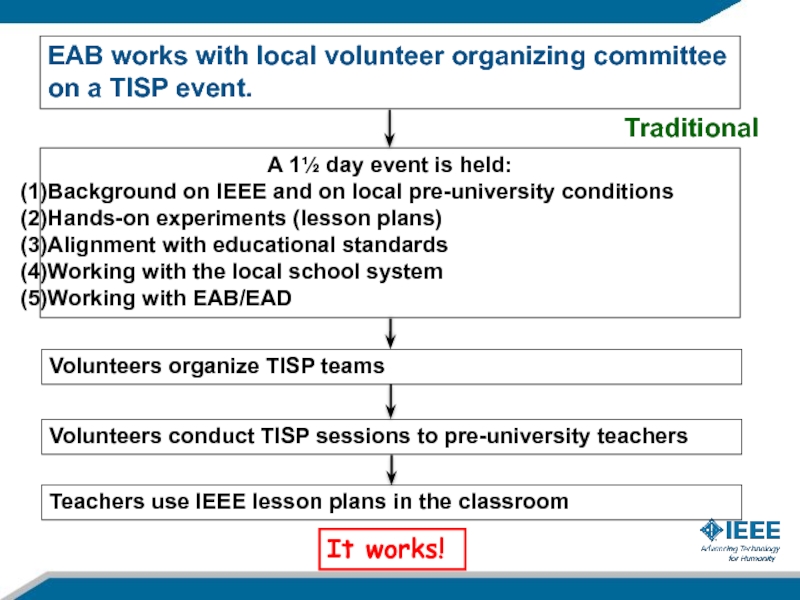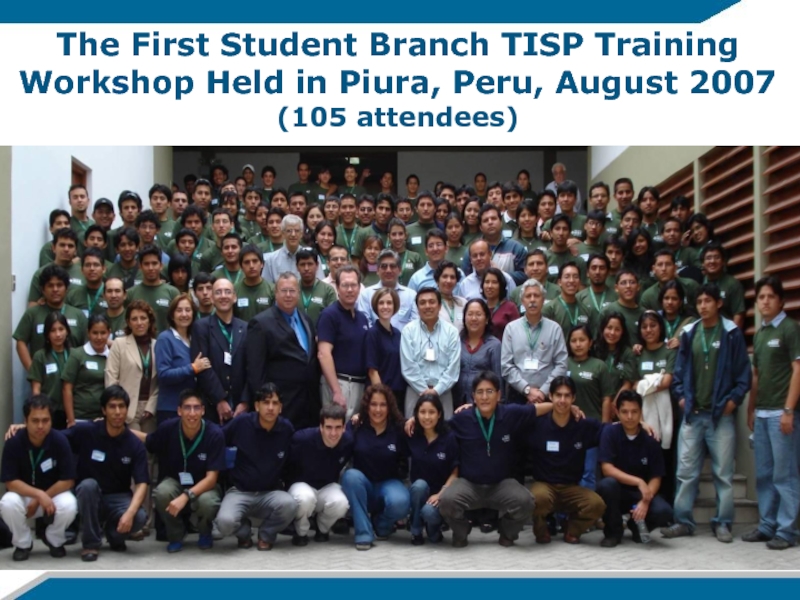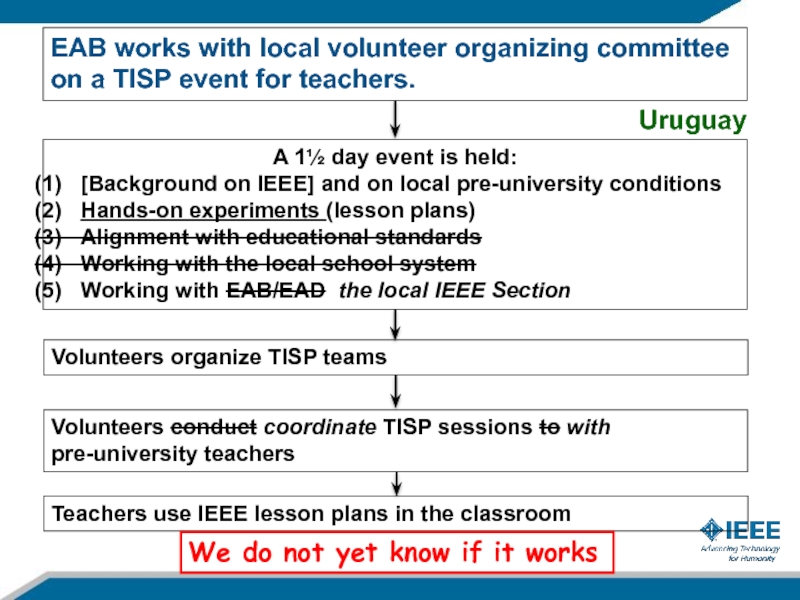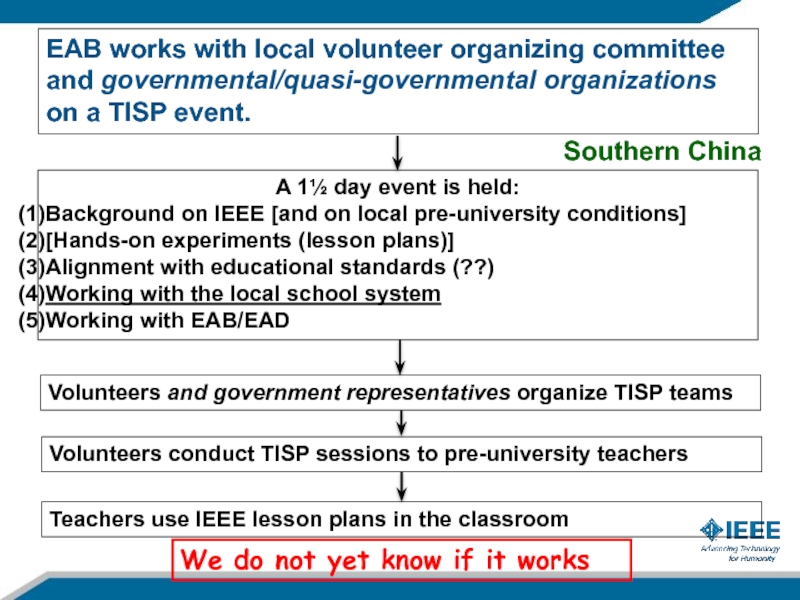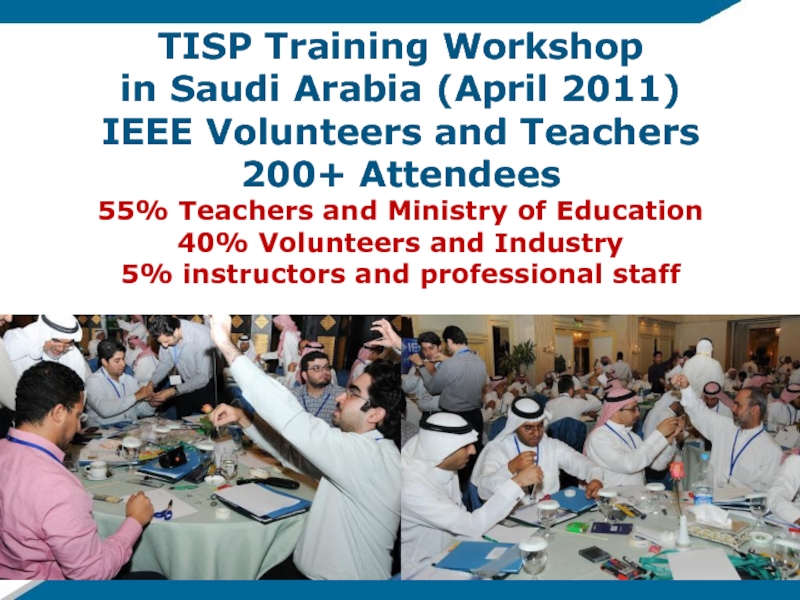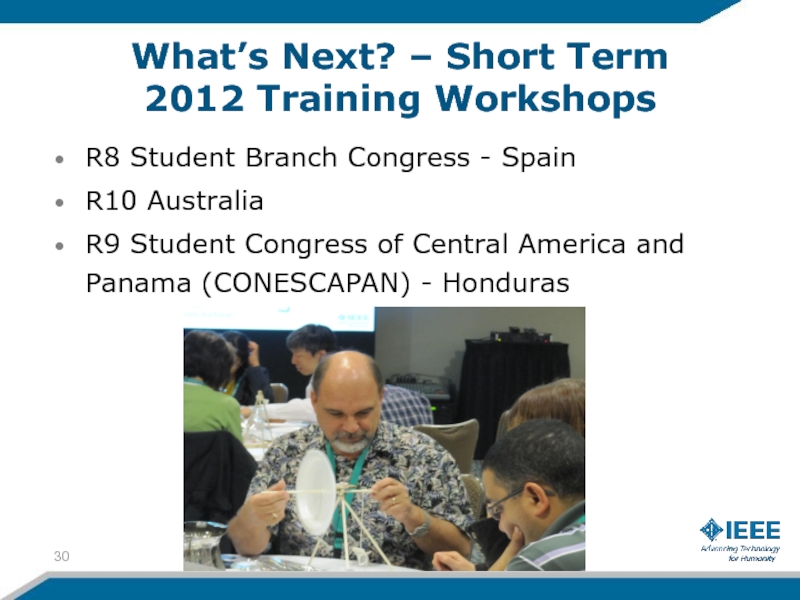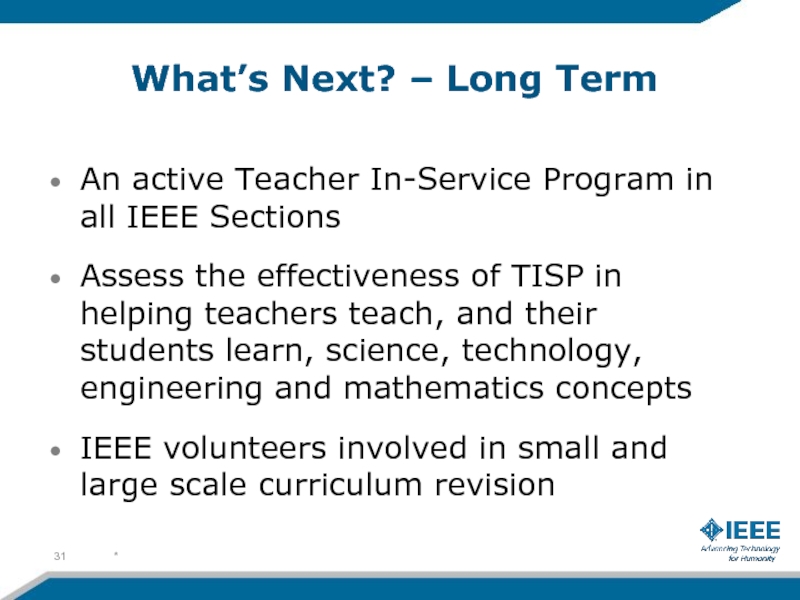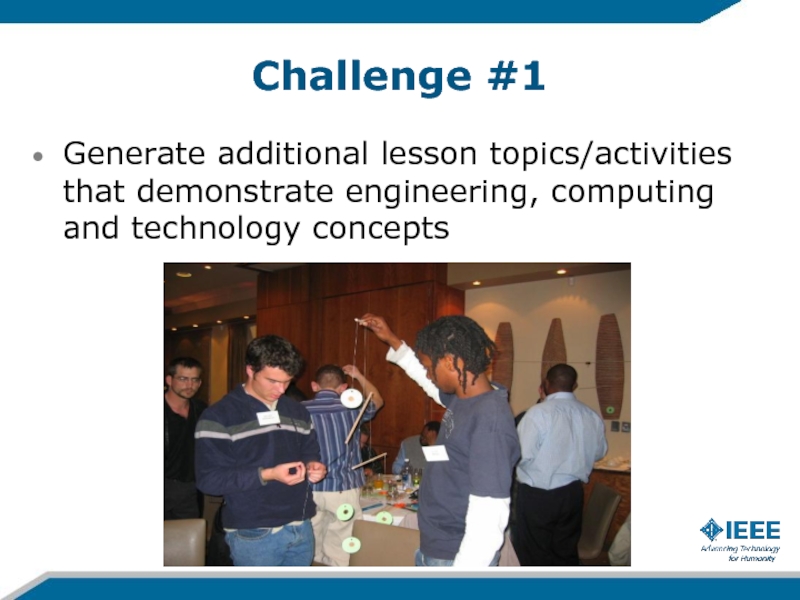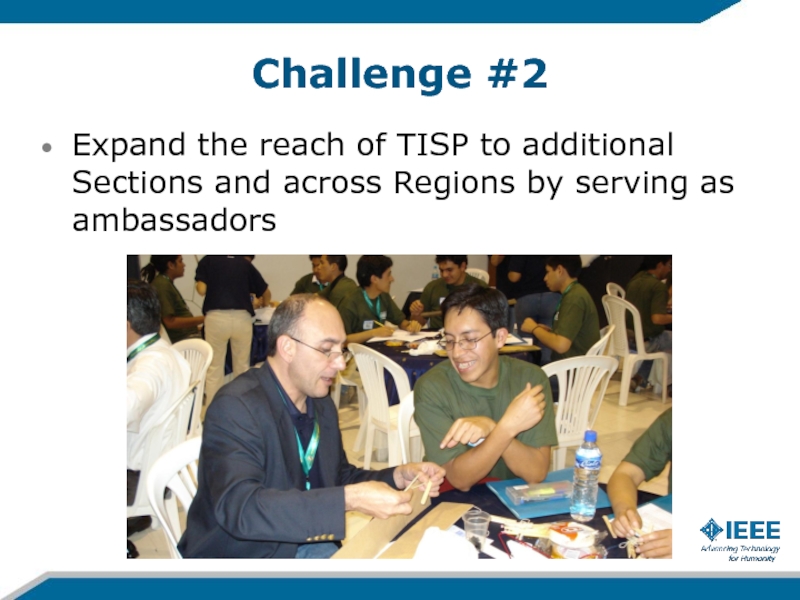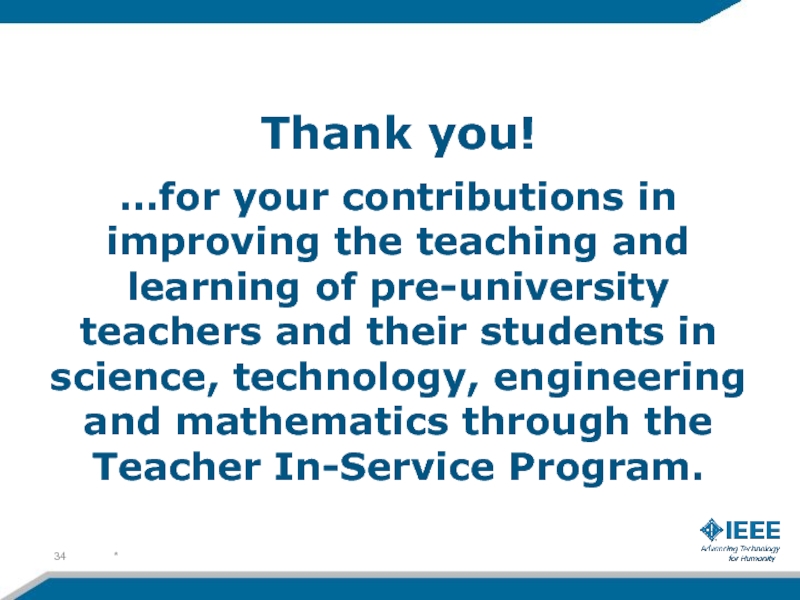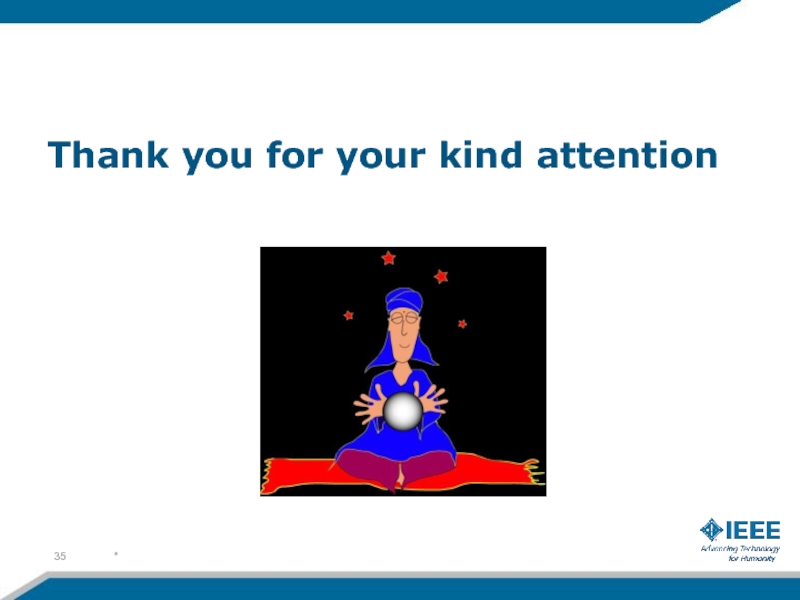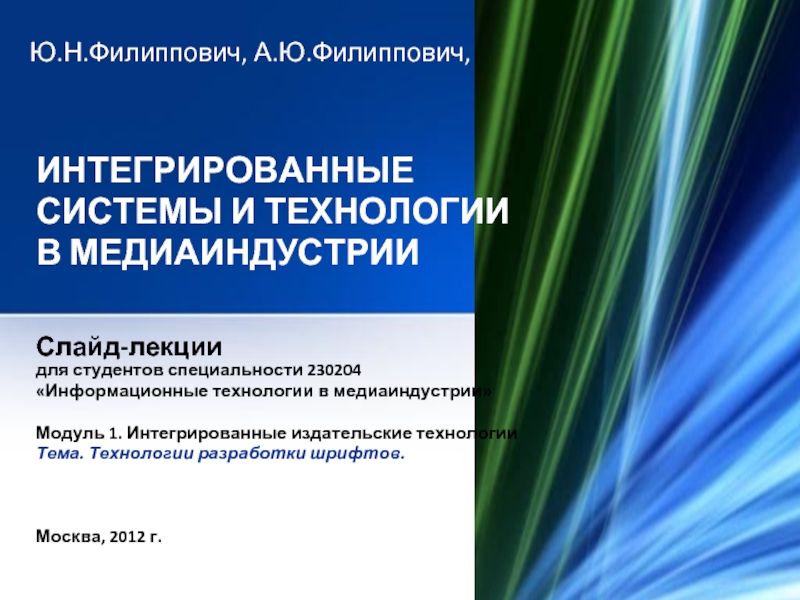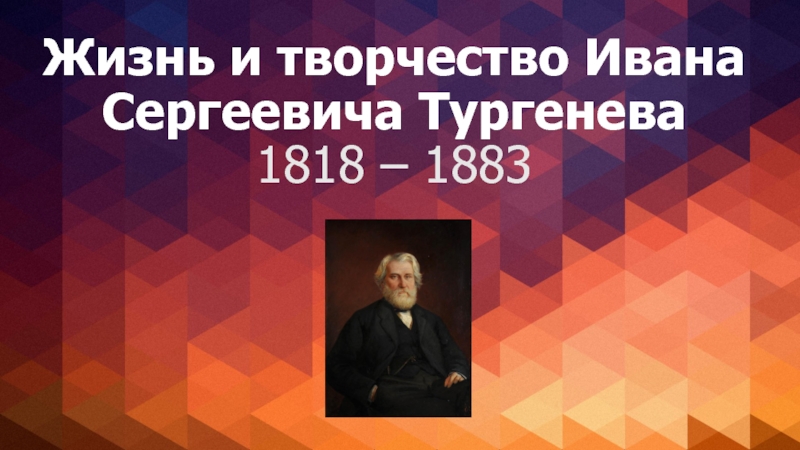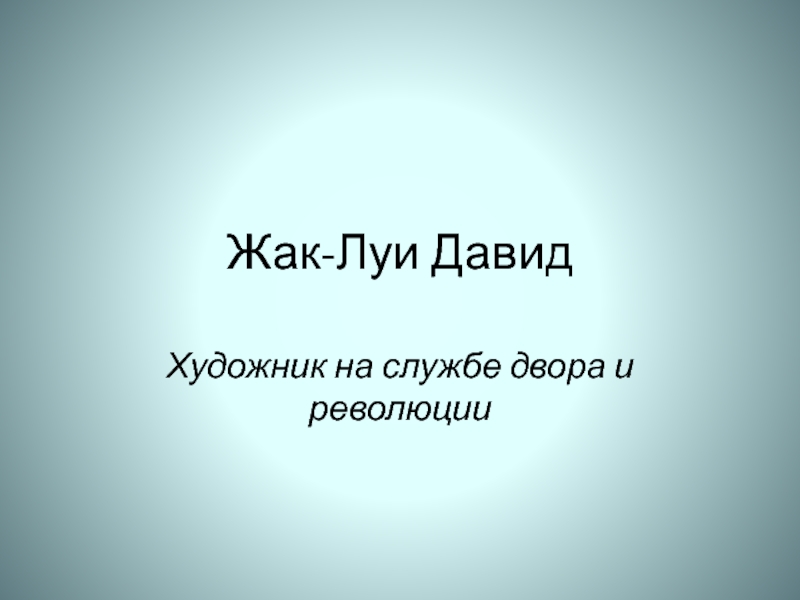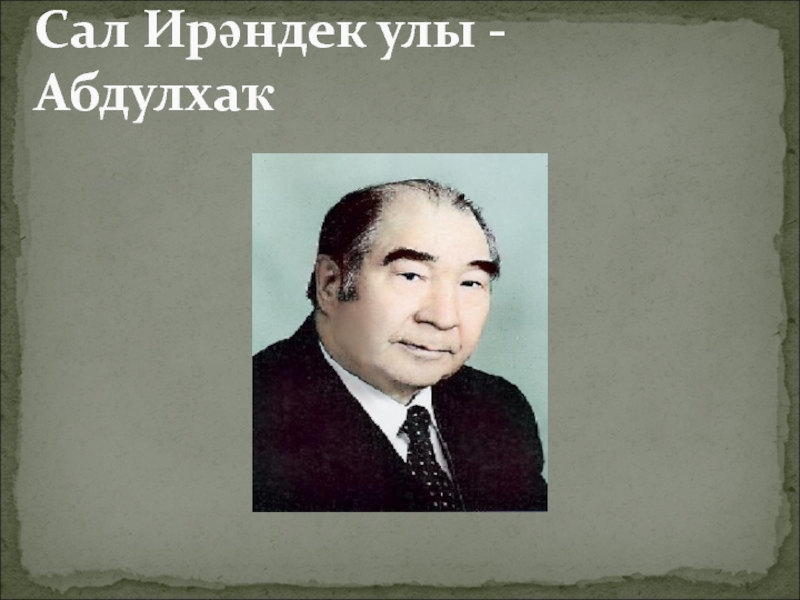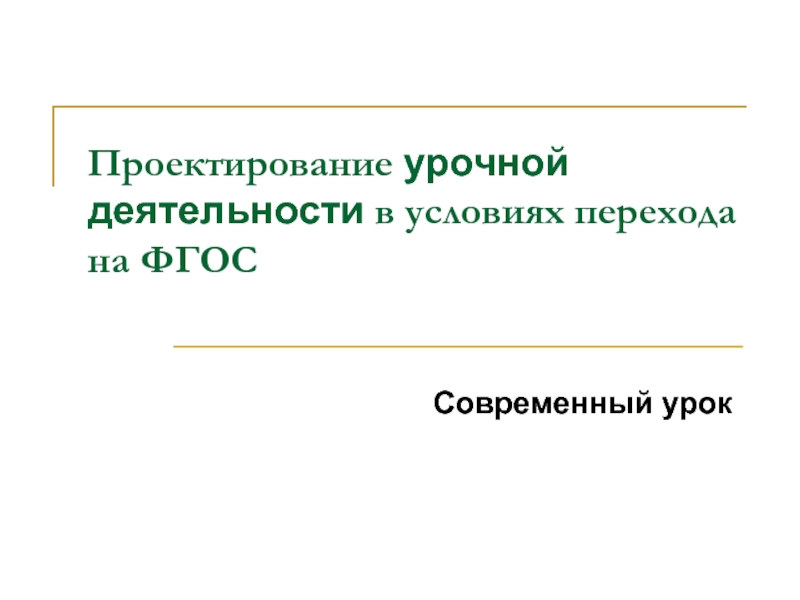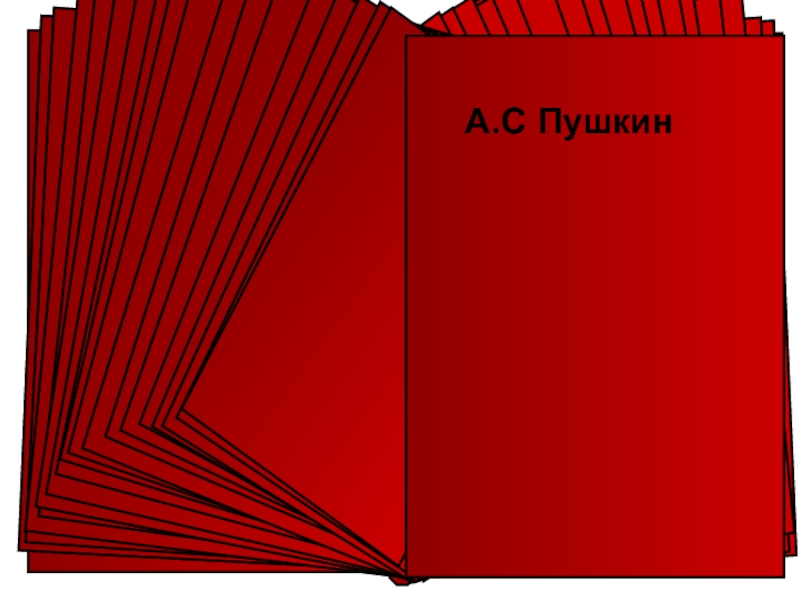Douglas Gorham, Managing Director, Educational Activities
HILTON TAMPA AIRPORT WESTSHORE
TAMPA, FLORIDA
MAY 2012
- Главная
- Разное
- Дизайн
- Бизнес и предпринимательство
- Аналитика
- Образование
- Развлечения
- Красота и здоровье
- Финансы
- Государство
- Путешествия
- Спорт
- Недвижимость
- Армия
- Графика
- Культурология
- Еда и кулинария
- Лингвистика
- Английский язык
- Астрономия
- Алгебра
- Биология
- География
- Детские презентации
- Информатика
- История
- Литература
- Маркетинг
- Математика
- Медицина
- Менеджмент
- Музыка
- МХК
- Немецкий язык
- ОБЖ
- Обществознание
- Окружающий мир
- Педагогика
- Русский язык
- Технология
- Физика
- Философия
- Химия
- Шаблоны, картинки для презентаций
- Экология
- Экономика
- Юриспруденция
IEEE Symposium on Pre-University Teacher Training. The History of IEEE’s Teacher In-Service Program презентация
Содержание
- 1. IEEE Symposium on Pre-University Teacher Training. The History of IEEE’s Teacher In-Service Program
- 2. The History of TISP Agenda How do
- 3. How Did I Fit Into the TISP
- 4. Why TISP? Pre-university educators have not had
- 6. Overall TISP Goals Empower IEEE “champions” to
- 7. How TISP Started After several IEEE Florida
- 8. …John Luce raised his hand! *
- 9. How TISP Started The first TISP session
- 10. How TISP Started On 2 March
- 11. Where is TISP Now? Between 2001-2004, TISP
- 12. Moshe Kam Become VP of EA *
- 13. Where is TISP Now? Resulting in Volunteer
- 14. Training Workshops: 2005-Present 25 Workshops - 2203 Participants www.ieee.org/education_careers/education/preuniversity/tispt/tispworkshops.html
- 15. Teacher In-Service Program Presentations Over 168 TISP
- 16. TISP Presentations by Volunteers Teacher Survey Results
- 17. TISP Presentations by Volunteers Teacher Survey Results
- 18. Where in the World are TISP Volunteers and Activities? 38 countries, 2000+ volunteers
- 19. How Have TISP Training Workshops Evolved?
- 20. VARIANTS ON THE ORIGINAL MODEL
- 21. Composition of Participants Participants: 70%
- 22. EAB works with local volunteer organizing committee
- 23. EAB and sometimes a Regional Task Force
- 24. The First Student Branch TISP Training Workshop Held in Piura, Peru, August 2007 (105 attendees)
- 25. Guayaquil, Ecuador 10-11 November
- 26. EAB works with local volunteer organizing committee
- 27. EAB works with local volunteer organizing committee
- 28. EAB works with a local volunteer organizing
- 29. TISP Training Workshop in Saudi Arabia
- 30. What’s Next? – Short Term 2012
- 31. What’s Next? – Long Term An
- 32. Challenge #1 Generate additional lesson topics/activities that demonstrate engineering, computing and technology concepts
- 33. Challenge #2 Expand the reach of TISP
- 34. Thank you! …for your contributions
- 35. Thank you for your kind attention *
Слайд 1IEEE SYMPOSIUM ON PRE-UNIVERSITY TEACHER TRAINING The History of IEEE’s
Слайд 2The History of TISP
Agenda
How do I fit into the TISP story?
Why
How TISP started
What is the current status of TISP?
How have TISP training workshops evolved?
What’s next?
A challenge or two
*
Слайд 3How Did I Fit Into the TISP Story?
Spent 26 years as
Understand the professional development needs of teachers
Began working for IEEE in July 2000 while living in Bradenton, Florida
Made a commitment to work with the local Section (FWCS)
Identified a professional development gap for teachers that engineers could fill
*
Слайд 4Why TISP?
Pre-university educators have not had sufficient exposure to engineering, computing
Who is in a better position than engineers to provide professional development for local pre-university teachers in science, technology, engineering and mathematics?
*
Слайд 6Overall TISP Goals
Empower IEEE “champions” to develop collaborations with local pre-university
Enhance the level of technological literacy of pre-university educators
Increase the general level of technological literacy of pre-university students
Increase the level of understanding of the needs of educators among the engineering community
Identify ways that engineers
can assist schools and
school systems
Слайд 7How TISP Started
After several IEEE Florida West Coast Section ExCom meetings
then……
*
Слайд 9How TISP Started
The first TISP session was held on 19 February
35 teachers attended
4 IEEE volunteers participated
John Luce
Jules Joslow
Quang Tang
Bob Ashley
And TV coverage!
*
Слайд 10How TISP Started
On 2 March 2001, the second TISP session
In July 2001, the first TISP training workshop was held
One-day training session
9 participants
Canada(1), South Africa(1)
US(7)
*
Слайд 11Where is TISP Now?
Between 2001-2004, TISP training workshops were small in
2-3 training workshops were held
@20 participants in total
In 2005, things changed….
*
Слайд 13Where is TISP Now?
Resulting in Volunteer training workshops conducted on a
Region-wide
Large Section
Multiple Sections
The IEEE New Initiative Committee and the IEEE Foundation provided seed funding
*
Слайд 14Training Workshops:
2005-Present
25 Workshops - 2203 Participants
www.ieee.org/education_careers/education/preuniversity/tispt/tispworkshops.html
Слайд 15Teacher In-Service Program
Presentations
Over 168 TISP presentations have been reported by IEEE
TISP presentations have reached over 4100 pre-university educators
This reach represents more than 445,000 students each year
Слайд 19How Have TISP Training Workshops Evolved?
“The Traditional Approach”
Train Volunteers
IEEE Section
Teachers and Instructors
…using approved lesson plans on engineering and engineering design
IEEE members will develop and conduct TISP training sessions with Teachers
Teachers include these concepts when teaching their Students
IEEE Volunteers
Teachers
Students
Слайд 21Composition of Participants
Participants:
70% HGM volunteers
5% student branch leaders
10% teachers
5%
10% staff and instructors
Participants:
5% HGM volunteers
70% student branch members and/or leaders
10% teachers
5% administrators
10% staff and instructors
Participants:
5% HGM volunteers
5% student branch leaders
75% teachers
5% administrators
10% staff and instructors
Traditional
Peru, Ecuador
Uruguay
Participants:
40% HGM volunteers
0% student branch leaders
25% teachers
25% administrators
10% staff and instructors
Southern China
Слайд 22EAB works with local volunteer organizing committee on a TISP event.
A 1½ day event is held:
Background on IEEE and on local pre-university conditions
Hands-on experiments (lesson plans)
Alignment with educational standards
Working with the local school system
Working with EAB/EAD
Volunteers organize TISP teams
Volunteers conduct TISP sessions to pre-university teachers
Teachers use IEEE lesson plans in the classroom
Traditional
It works!
Слайд 23EAB and sometimes a Regional Task Force works with local volunteer
A 1½ day event is held:
Background on IEEE [and on local pre-university conditions]
Hands-on experiments (lesson plans)
Alignment with educational standards
Working with the local school system
Working with EAB/EAD
Volunteers and Regional Task Force organize TISP teams
Volunteers aided by Regional Task Force conduct TISP sessions to pre-university teachers
Teachers use IEEE lesson plans in the classroom
Peru, Ecuador
It works!
Слайд 24The First Student Branch TISP Training Workshop Held in Piura, Peru,
Слайд 25 Guayaquil, Ecuador
10-11 November 2009
A training session for student
Based on the success of the student branch session in Piura, Peru in 2007
A new TISP model
140 attendees
Слайд 26EAB works with local volunteer organizing committee on a TISP event
A 1½ day event is held:
[Background on IEEE] and on local pre-university conditions
Hands-on experiments (lesson plans)
Alignment with educational standards
Working with the local school system
Working with EAB/EAD the local IEEE Section
Volunteers organize TISP teams
Volunteers conduct coordinate TISP sessions to with pre-university teachers
Teachers use IEEE lesson plans in the classroom
Uruguay
We do not yet know if it works
Слайд 27EAB works with local volunteer organizing committee and governmental/quasi-governmental organizations on
A 1½ day event is held:
Background on IEEE [and on local pre-university conditions]
[Hands-on experiments (lesson plans)]
Alignment with educational standards (??)
Working with the local school system
Working with EAB/EAD
Volunteers and government representatives organize TISP teams
Volunteers conduct TISP sessions to pre-university teachers
Teachers use IEEE lesson plans in the classroom
Southern China
We do not yet know if it works
Слайд 28EAB works with a local volunteer organizing committee, the Ministry of
A 1½ day event is held:
Background on IEEE [and on local pre-university conditions]
[Hands-on experiments (lesson plans)]
Alignment with educational standards
Working with the local school system
Working with EAB/EAD
Volunteers and government representatives organize TISP teams
Volunteers conduct TISP sessions to pre-university teachers
Teachers use IEEE lesson plans in the classroom
Saudi Arabia
It works!
Слайд 29TISP Training Workshop in Saudi Arabia (April 2011) IEEE Volunteers and Teachers 200+
*
Слайд 30What’s Next? – Short Term
2012 Training Workshops
R8 Student Branch Congress
R10 Australia
R9 Student Congress of Central America and Panama (CONESCAPAN) - Honduras
Слайд 31What’s Next? – Long Term
An active Teacher In-Service Program in
Assess the effectiveness of TISP in helping teachers teach, and their students learn, science, technology, engineering and mathematics concepts
IEEE volunteers involved in small and large scale curriculum revision
*
Слайд 32Challenge #1
Generate additional lesson topics/activities that demonstrate engineering, computing and technology
Слайд 33Challenge #2
Expand the reach of TISP to additional Sections and across
Слайд 34Thank you! …for your contributions in improving the teaching and learning
*
